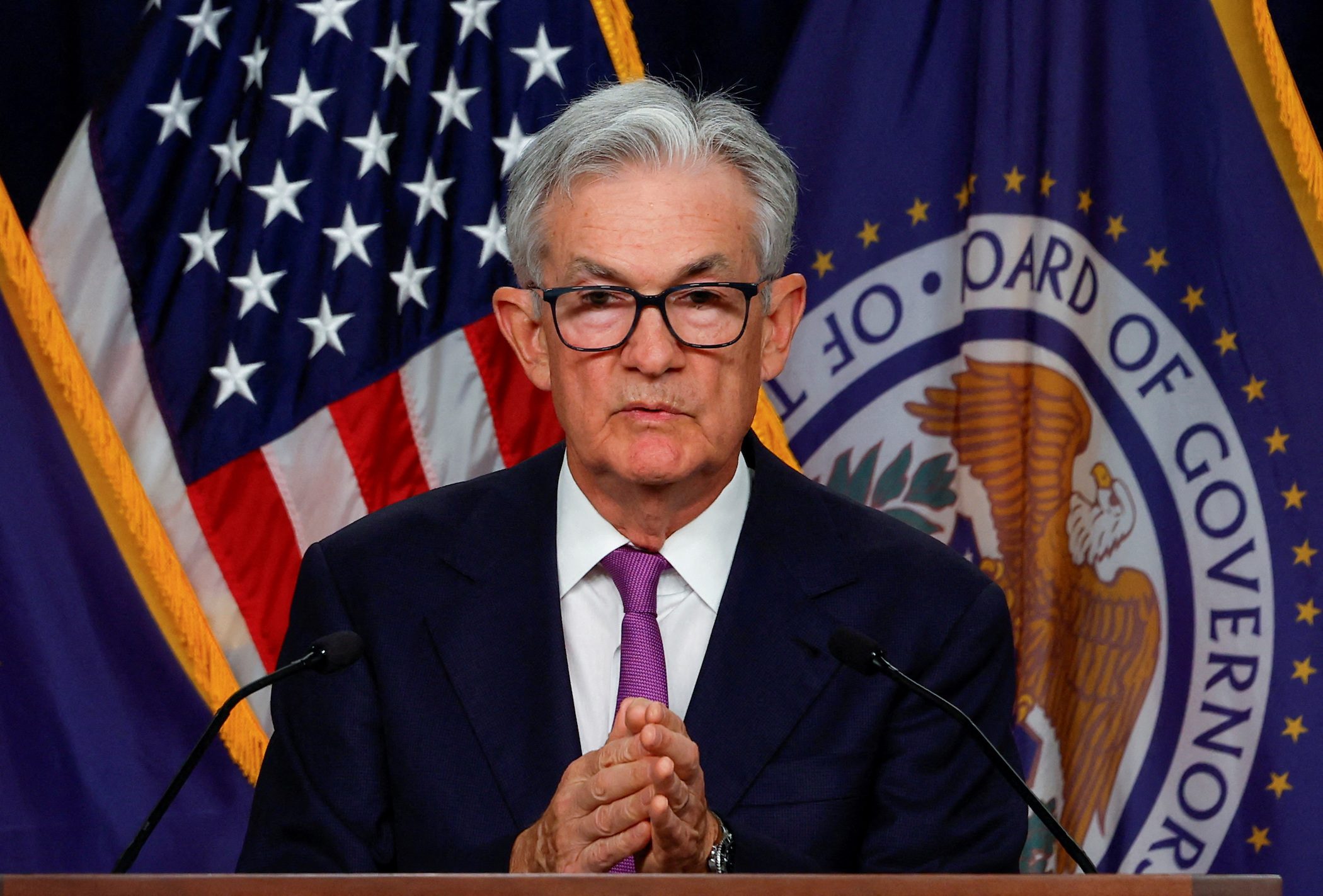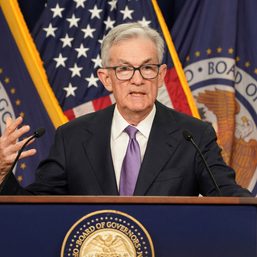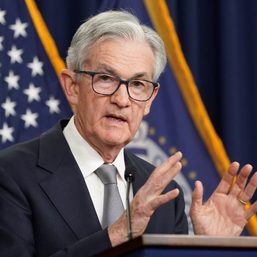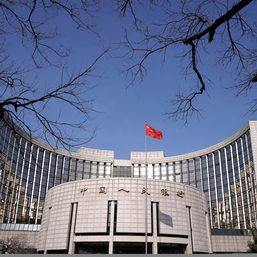SUMMARY
This is AI generated summarization, which may have errors. For context, always refer to the full article.

WASHINGTON, USA – The US Federal Reserve held interest rates steady on Wednesday, September 20, but stiffened a hawkish monetary policy stance that its officials increasingly believe can succeed in lowering inflation without wrecking the economy or leading to large job losses.
The Fed’s benchmark overnight interest rate may still be lifted one more time this year to a peak 5.50%-5.75% range, according to updated quarterly projections released by the US central bank, and rates kept significantly tighter through 2024 than previously expected.
“People hate inflation. Hate it,” Fed Chair Jerome Powell said in a press conference after the end of a two-day policy meeting at which central bank officials held the benchmark overnight interest rate in the current 5.25%-5.50% range, but sketched a stricter policy path moving forward in an inflation fight they now see lasting into 2026.
But a “solid” economy with still “strong” job growth, Powell said, will allow the central bank to keep that additional pressure on financial conditions through 2025 with much less of a cost to the economy and labor market than in previous US inflation battles.
Indeed, monetary policy is expected to remain slightly restrictive into 2026 while the economy continues to largely grow at its estimated trend level of around 1.8%.
Even as inflation declines for the rest of 2023 and in coming years, the Fed anticipates only modest initial reductions to its policy rate. That means the expected half percentage point of rate cuts in 2024 would have the net effect of raising the inflation-adjusted “real” rate.
As of June, Fed officials had expected to cut rates by a full percentage point next year.
While Powell said the Fed was “in a position to proceed carefully” with future policy moves, he also made clear the jury was, to some degree, still out on the central bank’s fight to contain the worst outbreak of inflation in 40 years.
“We want to see convincing evidence really, that we have reached the appropriate level” of interest rates to return inflation to the Fed’s 2% target, a judgment its policymakers have not yet made, Powell told reporters.
Inflation by some measures remains more than double the Fed’s desired level, though Powell said the pace appeared to be in decline across several key parts of the economy.
Bond yields jumped after the release of the latest Fed projections and policy statement, with the 2-year Treasury note at a roughly 17-year high near 5.2%. Major US stock indices fell.
A wider runway?
While Powell’s inflation language remained strict, the tone did shift to accommodate what appears to be a growing sense among US central bankers that the sought-after “soft landing” may be developing.
Powell would not call it the Fed’s “baseline” – yet.
But the path had likely “widened…. I do think it’s possible,” he said, a comment underlined by projections showing Fed policymakers at the median see inflation continuing to fall even with gross domestic product (GDP) continuing to grow and the unemployment rate never rising above 4.1%, an outcome that would fly in the face of US history and the predictions of several top economists.
Even Fed staff had until recently penciled in an expected recession this year, the usual outcome of successful inflation battles that drive out spending and investment and push up joblessness. The median GDP forecast among policymakers for 2023 is now 2.1% – five times where it began the year.
With the federal funds rate falling to 5.1% by the end of 2024 and 3.9% by the end of 2025, the central bank’s main measure of inflation is projected to drop to 3.3% by the end of this year, to 2.5% next year and to 2.2% by the end of 2025. The Fed expects to get inflation back to its 2% target in 2026, which is later than some officials had thought possible.
Ahead of this week’s Fed meeting, investors had been banking on significant rate cuts next year, an expectation clouded by the projections that show 10 of 19 officials see the policy rate remaining above 5% through next year.
That means companies and households will face even tighter credit conditions and higher borrowing costs than they have already absorbed during the Fed’s aggressive two-year battle to contain inflation. Rising government bond yields, for example, will pass through into how banks set interest rates on credit cards, auto loans, and home mortgages.
If it was a hawkish outcome, however, it was because the economy had outperformed, with inflation falling so far at little cost to jobs or economic output.
“The message conveyed in their upward revision to growth and their downward revision to the unemployment rate in 2024 clearly indicates a Fed that has dialed up their expectation for a soft landing, despite higher-for-longer rates,” said Olu Sonola, head of US regional economics at Fitch Ratings.
The Fed’s statement was approved unanimously after a meeting that marked new Fed Governor Adriana Kugler’s debut on the central bank policymaking stage. – Rappler.com
Add a comment
How does this make you feel?





![[OPINION] A rebellion long overdue](https://www.rappler.com/tachyon/2024/06/mass-uprising-matrix-june-4-2024.jpg?resize=257%2C257&crop_strategy=attention)







There are no comments yet. Add your comment to start the conversation.